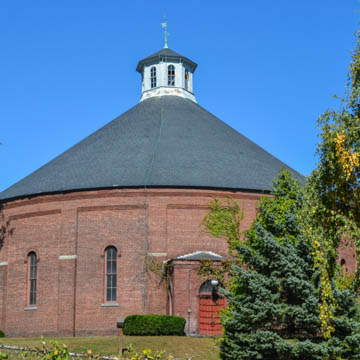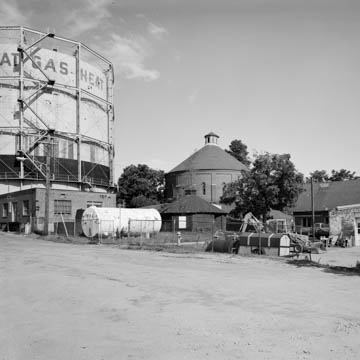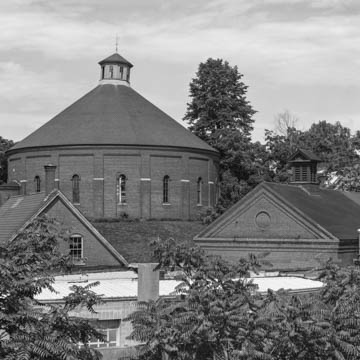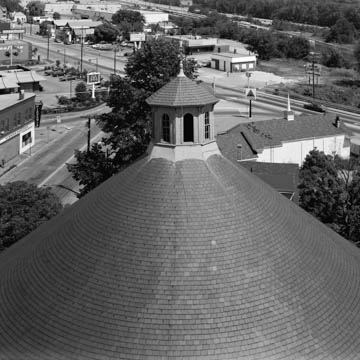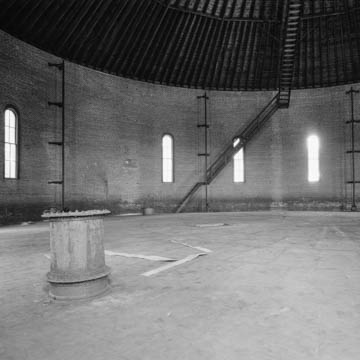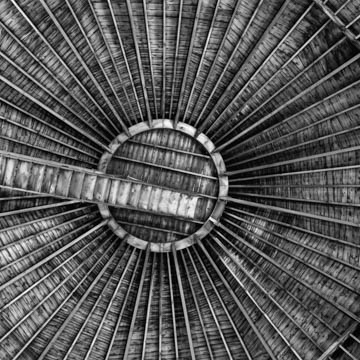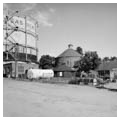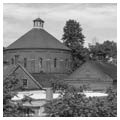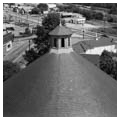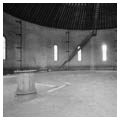This cylindrical brick building encloses a floating sheet-iron tank that originally served as a receptacle for illuminating gas generated in a nearby building. This is believed to be the last gasholder house in the United States to retain its internal tank. Built for the Concord Gas Light Company (founded 1850) to supplant smaller gasholders with lesser capacities, the 1888 structure is 86 feet in diameter and 28 feet high to the top of its brick walls, and had a maximum storage capacity of 120,000 cubic feet of gas. W. C. Whyte of New York City built the structure, and Laurel Iron Works of Philadelphia fabricated its enclosed wrought-iron tank. Both companies were specialists in gasholder design and construction. The riveted gasholder tank weighs 80,000 pounds and floated like an inverted cup in a subterranean cistern holding 800,000 gallons of water; the tank’s weight maintained an even gas pressure and forced the gas through the city’s buried mains. Until 1894, the gasholder stored coal gas, distilled from coal that was delivered by the adjacent railroad and heated in retorts. The company then converted to carbureted water gas, composed of hydrogen and carbon monoxide extracted from steam passed through incandescent coal or coke and given increased illuminating properties by adding vaporized oil and superheating the mixture. In 1921 a large telescoping steel gasholder (since demolished) was built adjacent to the brick gasholder and the 1888 structure was used to store raw gas awaiting purification. Both structures remained in use until 1952, when Concord Gas Company ceased to manufacture gas and began to distribute natural gas delivered through a national pipeline system. A second, smaller brick gasholder house, without its internal cistern and tank, survives at St. Paul’s School in Concord, four miles distant; it now serves as the school’s post office.
You are here
Concord Gasholder House
If SAH Archipedia has been useful to you, please consider supporting it.
SAH Archipedia tells the story of the United States through its buildings, landscapes, and cities. This freely available resource empowers the public with authoritative knowledge that deepens their understanding and appreciation of the built environment. But the Society of Architectural Historians, which created SAH Archipedia with University of Virginia Press, needs your support to maintain the high-caliber research, writing, photography, cartography, editing, design, and programming that make SAH Archipedia a trusted online resource available to all who value the history of place, heritage tourism, and learning.

